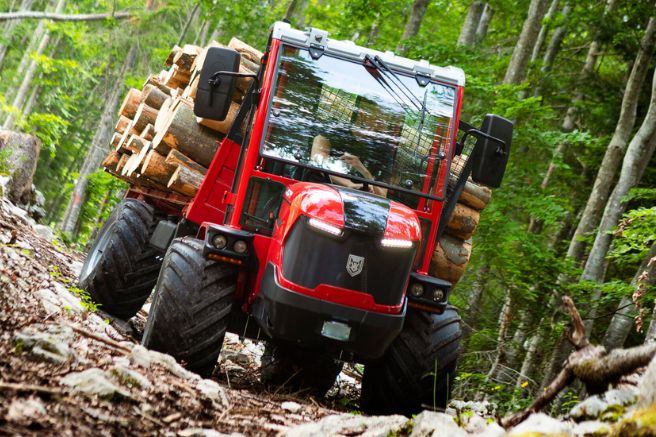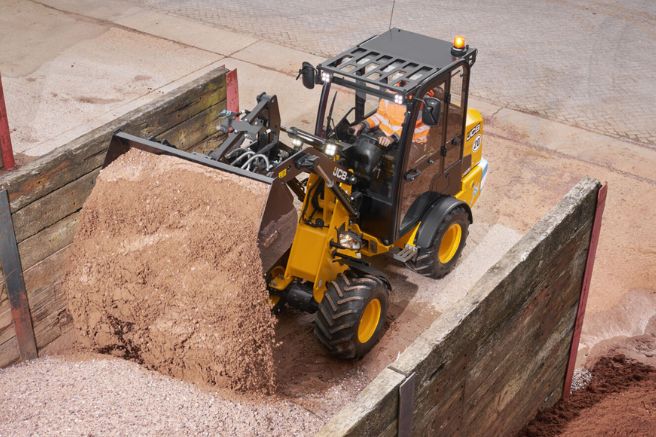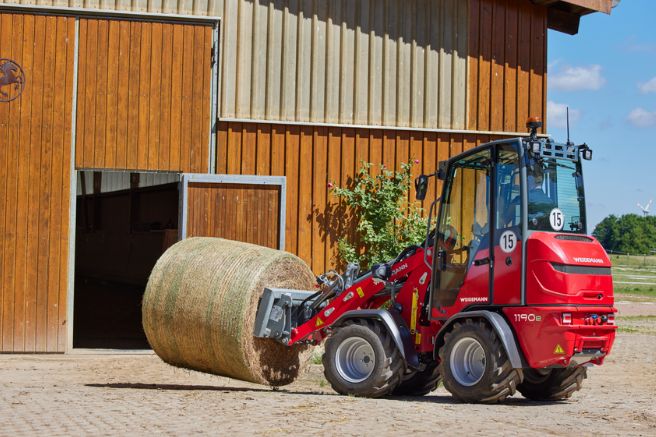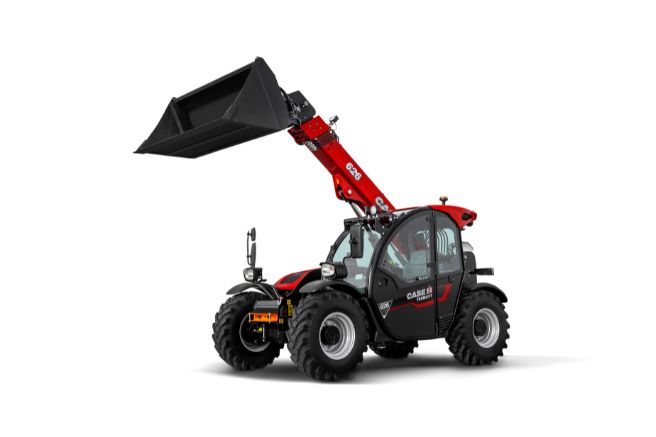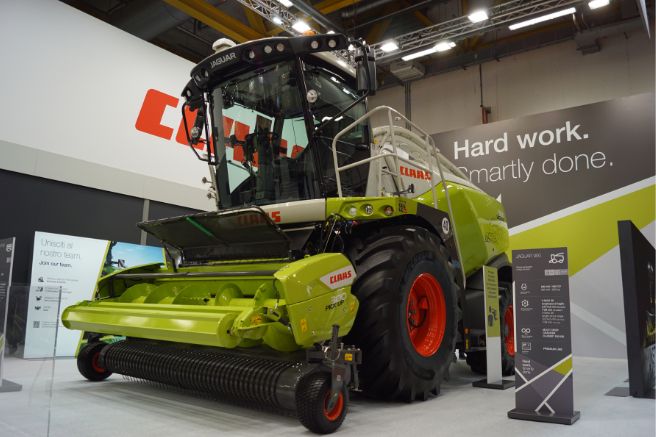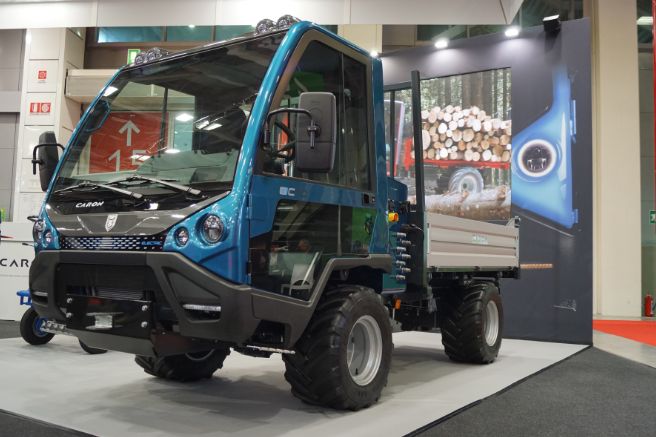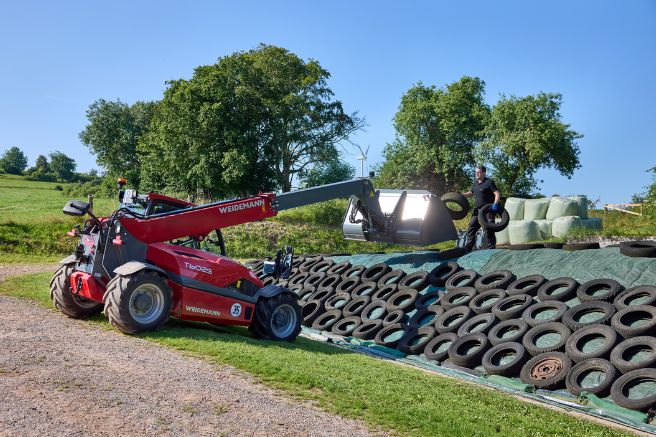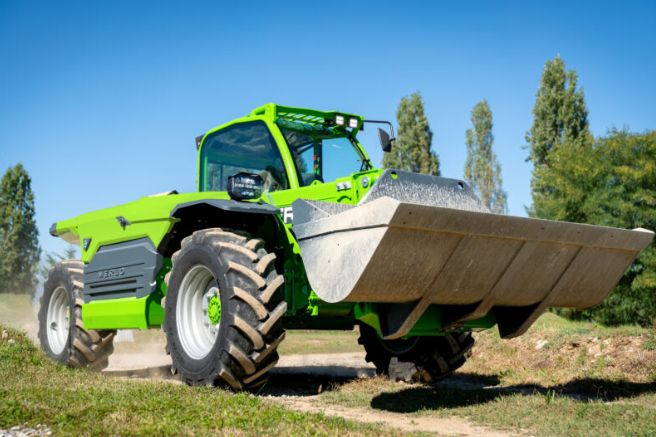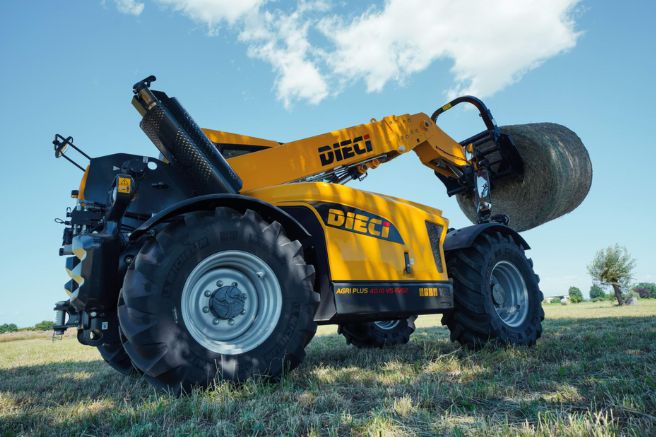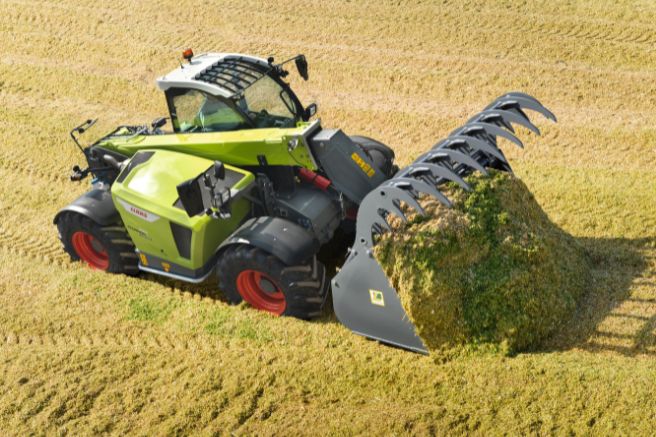Caron transporters are establishing themselves on the market as top products in the sector. Like Caron Evo 5, they boast high functionality, modern and reliable construction solutions, an attractive aesthetic and driving positions set up with ergonomics borrowed from the automotive sector A slow but constant growth that has lasted for more than 60 years, linked both to the quality of the products and to the development of a range that allows each user to have the most suitable machine to meet their needs. It is no coincidence that Caron…
Read MoreCategory: Machines
Jcb 403E: different climates, same comfort
Jcb is also aiming to expand its presence in the fully electric compact wheel loader segment with the launch of the “403E”, a 2.6 ton operating weight machine powered by a propulsion system with two independent electric motors with 33 and 20 kilowatts of peak power. JCB Aims for a Leading Role in the Full-Electric Compact Wheel Loader Segment. Company is set to take a prominent position in the full-electric compact wheel loader market, specifically designed to meet the needs of the agricultural sector. This ambition is evident in the…
Read MoreWeidemann 1190e & 1390e: beyond tradition
Since 2013, Weidemann has been leading the electrification of compact wheel loaders, continuously enhancing its lineup with increasingly high-performance models. Today, two variants are available: the Hoftrac 1190e and Hoftrac 1390e, both designed to outperform traditional models in terms of operational capabilities. The Pioneer of Electric Compact Wheel Loaders In November 2013, at the Agricultural Machinery Fair in Hanover, Weidemann astonished industry professionals by unveiling the first fully electric compact wheel loader for agricultural applications: the eHofTrac 1160. Just two years later, this prototype entered full-scale production, becoming available across…
Read MoreCase Ih Farmlift 626, maxi performance in mini format
Developed to meet the handling needs of the livestock sector, the new Case Ih Farmlift 626 compact telehandler combines a lifting capacity of 2,600 kilograms with a maximum reach height of nearly six meters and homologated towing capacity exceeding 13 tons. Compact, versatile, and highly functional—these are the defining traits of the newly launched Farmlift 626, which has been designed with a strong focus on the specific needs of Italian livestock farming. This compact machine is purpose-built for operation in tight, challenging spaces, boasting a width of just 1,890 millimeters…
Read MoreClaas, major and minor innovations for 2025
The “Jaguar” series of self-propelled forage harvesters by Claas is the global leader in the sector, holding an impressive 50% market share. Statistically, one out of every two forage harvesters sold worldwide is a “Jaguar,” a position achieved through a combination of quality and years of consistent product upgrades. A Boost for the “Jaguar 900” The latest advancements were introduced at EIMA 2024, featuring new “V-Flex” chopping drums across the range and the integration of “CSPS” analyses via the “Claas Connect” platform. Structurally and performance-wise, the machines remain unchanged but…
Read MoreCaron Ec70, virtuous explorations
The fully electric transporter “Ec70”, presented by Caron in Bologna, aims to assess the applicability of zero-emission propulsion in specific operational contexts. This environmentally virtuous approach, however, does not come at the expense of the machine’s operational capabilities. Exploring new propulsion solutions to address energy transition policies in a way best suited to each specific operational need—this is the design philosophy behind the “Ec70” transporter. Premiered at Eima 2024 by Caron, this fully electric prototype was developed by the Vicenza-based company to evaluate the feasibility of zero-emission propulsion, particularly in…
Read MoreWeidemann T6025: compact only in size
The range of Weidemann telehandlers expanded in early November with the launch of the “T6025” model, positioned between the “T7035” model and the ultra-compact “T4512,” the latter also available in an electric version. At first glance, the new machine might seem like a simple addition to fill the performance gap between the two aforementioned models in terms of capacity and height. However, it is actually another declaration of war by Weidemann against competitors, already challenged in the seven- and nine-meter height classes and now also targeting the highly popular six-meter…
Read MoreMerlo “Tfe43.7”, electric progressions
After presenting the concept in November 2023 at Agritechnica, the Merlo group is showcasing the “Tfe43.7” at Eima, the first medium-capacity Merlo telehandler powered electrically and capable of competing with traditional machines in terms of performance. Merlo is taking another step forward in refining its “Zero Generation” product line, which encompasses machines powered electrically. Following the compact “e-Worker” series, now also available with lithium batteries as an alternative to the standard lead-acid ones, and the “Cingo M600A-e” mover, which is currently being tested in an autonomous configuration, it is now…
Read More“Fast Attach” system by Dieci, everything in ten seconds
One of the reasons behind the commercial success of telescopic handlers lies in their versatility. They are machines that can perform a myriad of tasks both in the field and on the road simply by changing the attachment at the end of the arm. Until now, this operation had to be done by the operator exiting the cabin. Time is the key factor The mechanical connection of the attachment to the arm could be accomplished by appropriately maneuvering the machine to facilitate the attachment, but the hydraulic and electrical connections…
Read MoreClaas “Scorpion” model year 2024, generational leap
The Claas “Scorpion” series telescopic handlers, available in light and medium ranges, are the result of a recent and significant renewal process aimed at ensuring the best operational efficiency with lifting capacities ranging from 3,300 to 4,200 kilograms, complemented by maximum working heights that can reach up to ten meters. Deep revisitation Telescopic handlers have become indispensable tools in modern agriculture. Until a few years ago, tractors equipped with traditional front loaders were sufficient for handling tasks on the farm. Today, specific machines are necessary to accelerate increasingly intensive daily…
Read More
